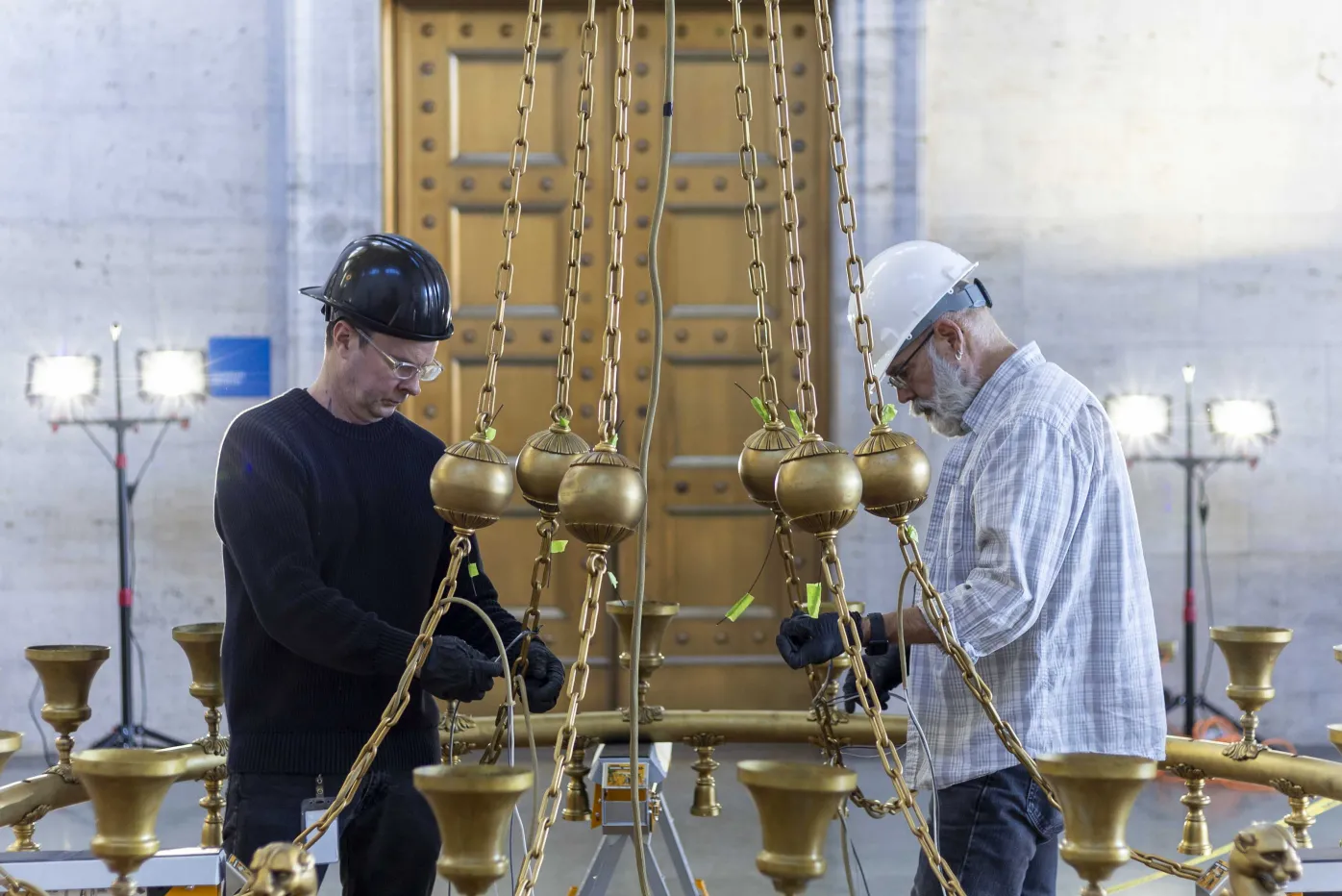Since the main Detroit Institute of Arts building opened in 1927, the gilt bronze chandeliers in the Great Hall have served as constant, recognizable elements in a space admired for its grandeur. Well known at the time for top-tier design and manufacturing of electric light fixtures and decorative metalwork, Edward F. Caldwell & Co. created the chandeliers in Art Nouveau style. Some think that Caldwell may have even collaborated with the main building’s architect, Paul Phillipe Cret, in the design of these magnificent chandeliers.
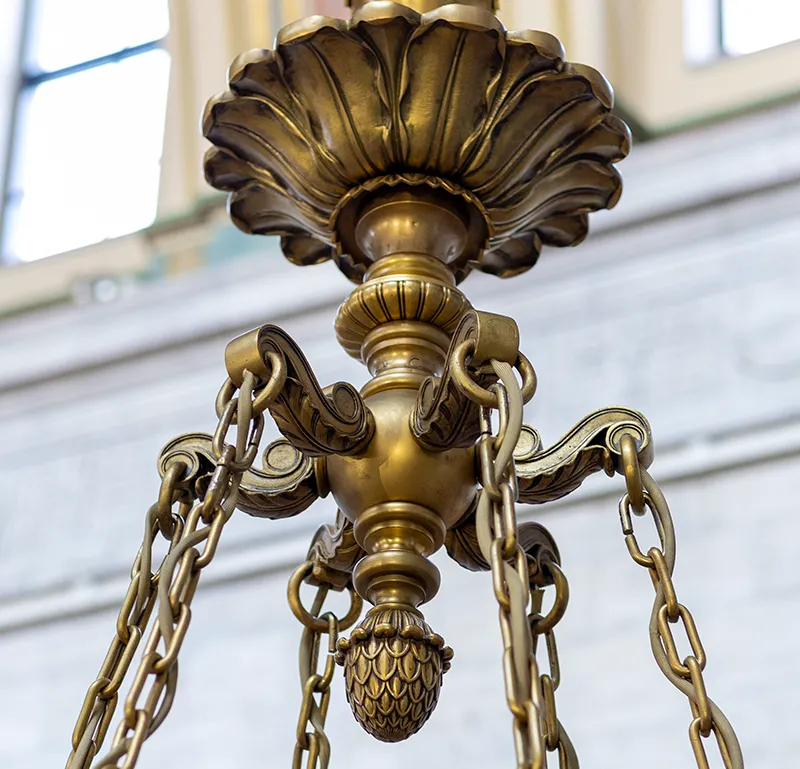
Edward F. Caldwell & Co. designed the detailed metalwork on the chandeliers.
Courtesy: Detroit Institute of Arts
The Great Hall’s origins surpass even the Detroit Industry Murals in the adjacent court, which initially served as a serene garden until Rivera began his work in 1932. Throughout the years, the occupants, so to speak, of the Great Hall changed — the space once accommodated The Thinker, which now sits just outside the Woodward Ave. entrance. Today, part of our very fine arms and armor collection inhabits the space with the visitors’ favorite Amemo (Mask of Humankind) — a stunning “textile” comprised of aluminum bottle caps and copper wire — by Ghanaian artist El Anatsui displayed on the travertine walls, thanks to the generous loan from the collection of Padma and Raj Vattikuti.
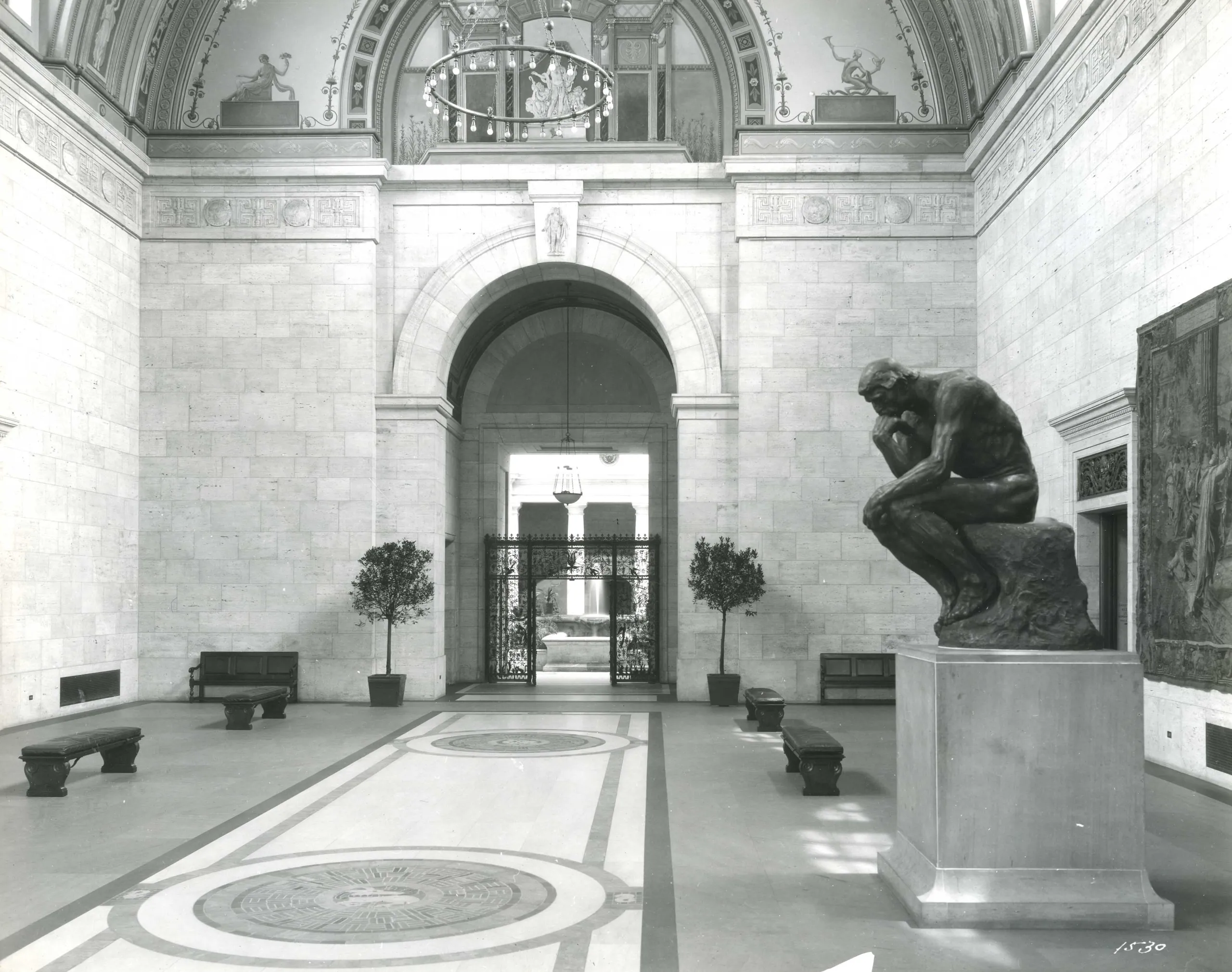
Auguste Rodin’s The Thinker once graced the Great Hall.
Courtesy: Detroit Institute of Arts Research Library and Archives
As a historic landmark, the DIA carefully upkeeps and renovates to ensure a continued extraordinary experience for all visitors. Over a year ago, we started planning how to modernize the system that raises and lowers the chandeliers while enhancing safety measures for those working with them. Watch the process unfold in this video.
Museum staff completes much work behind the scenes — and in the case of the recent chandeliers project in the Great Hall, I mean this quite literally. A one-and-a-half story area, referred to as “the loft,” sits above the decorative barrel-vaulted ceiling. Within that space, authorized employees utilize a roughly three-foot catwalk to gain access to the mechanism that raises and lowers the light fixtures.
For almost a century, a manual hand crank has mobilized the chandeliers, but a new electric winch system, or cable pulley, completes the same task with the push of a button and in half the time. Previously, staff could only access the manual crank by placing one foot on a support beam and the other on the catwalk. Adding three platforms connected to the catwalk increases safety measures. DIA employees can now easily raise and lower the chandeliers, primarily to change the 48 bulbs on each fixture.
To be compatible with the new winch system, the chandeliers journeyed to Virginia for rewiring in July 2024. How did we transfer these one-of-a-kind, 200- to 300-pound light fixtures? Our Collections Management and Building Operations teams, along with some contractors, used a large, sturdy cart nicknamed “The Cadillac” to carefully move and secure the chandeliers in a truck for transport.
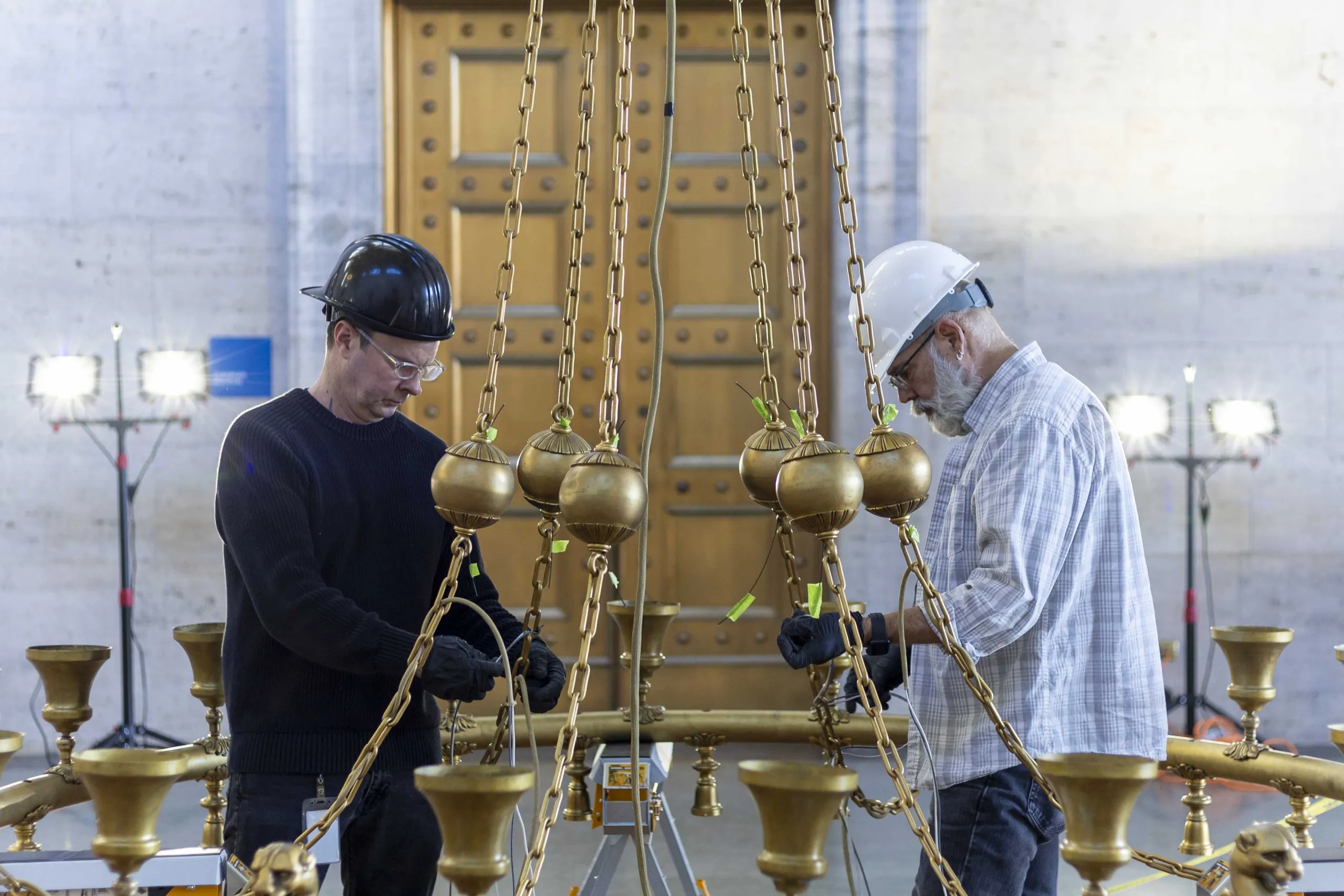
Collections Management Manager James Johnson, left, and Collections Management Director Terry Birkett during the reinstallation process
Courtesy: Detroit Institute of Arts
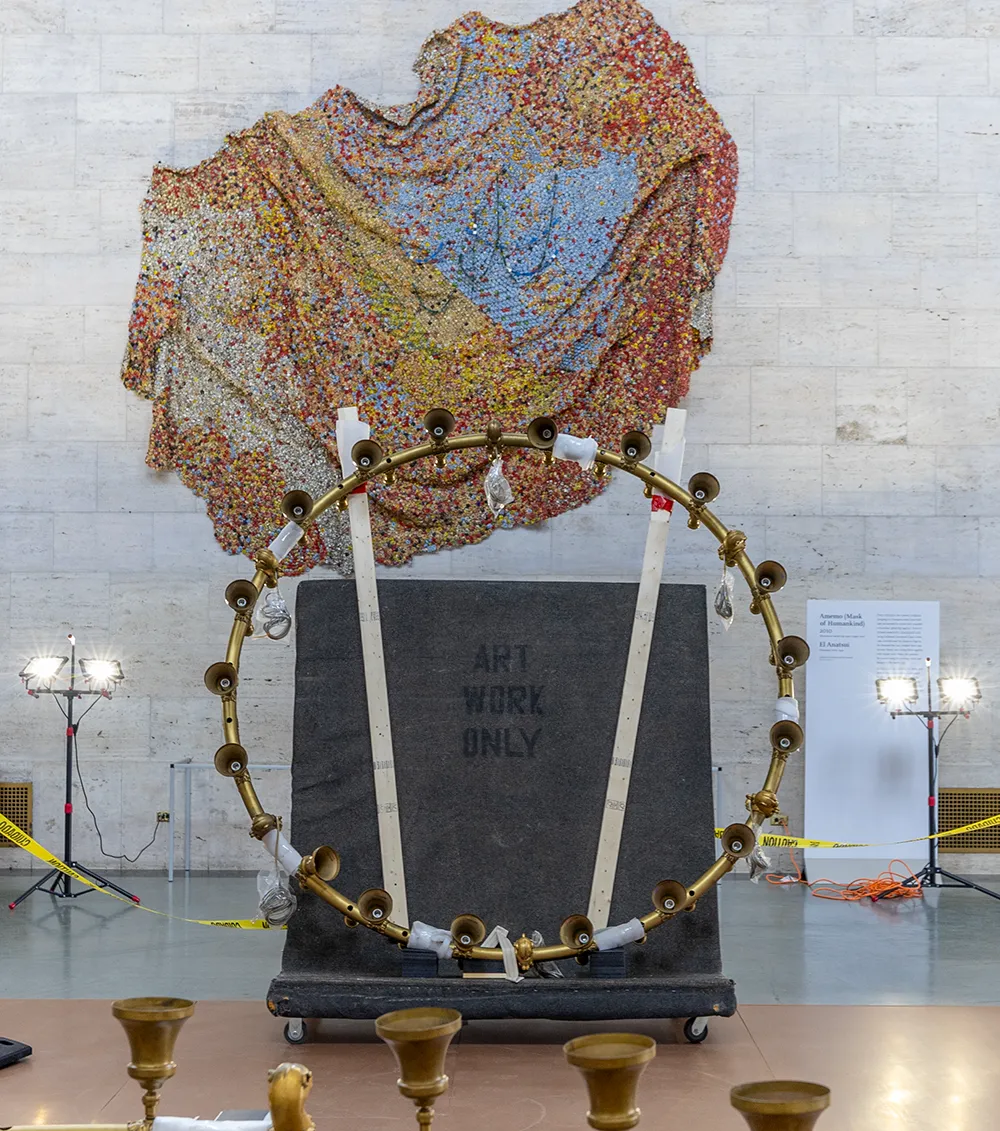
A chandelier secured on a large cart, aptly named “The Cadillac,” awaits transport, with Amemo (Mask of Humankind) by Ghanaian artist El Anatsui in the background, a generous loan from the collection of Padma and Raj Vattikuti.
Courtesy: Detroit Institute of Arts
When the chandeliers returned in January, a crew of dedicated staff and contractors reinstalled the light fixtures over the span of roughly four 10-hour days. Thanks to these updates, the iconic chandeliers will remain on view at the DIA for another century and beyond. Next time you walk in the space, please look up and enjoy the art and light that hovers over you. At the DIA, we would like you to have an extraordinary experience from all angles.

Caption: The Great Hall’s chandeliers back in place after a six-month absence
Courtesy: Collections Management Director Terry Birkett
